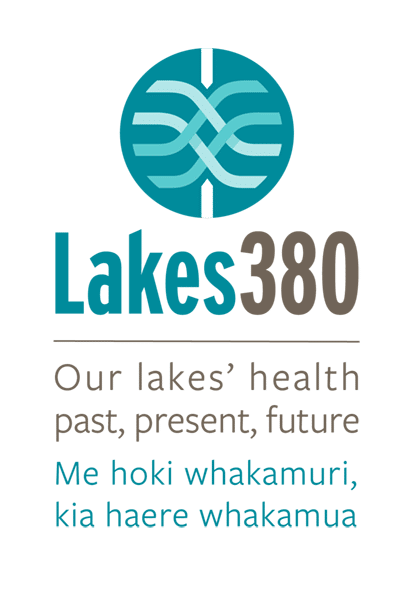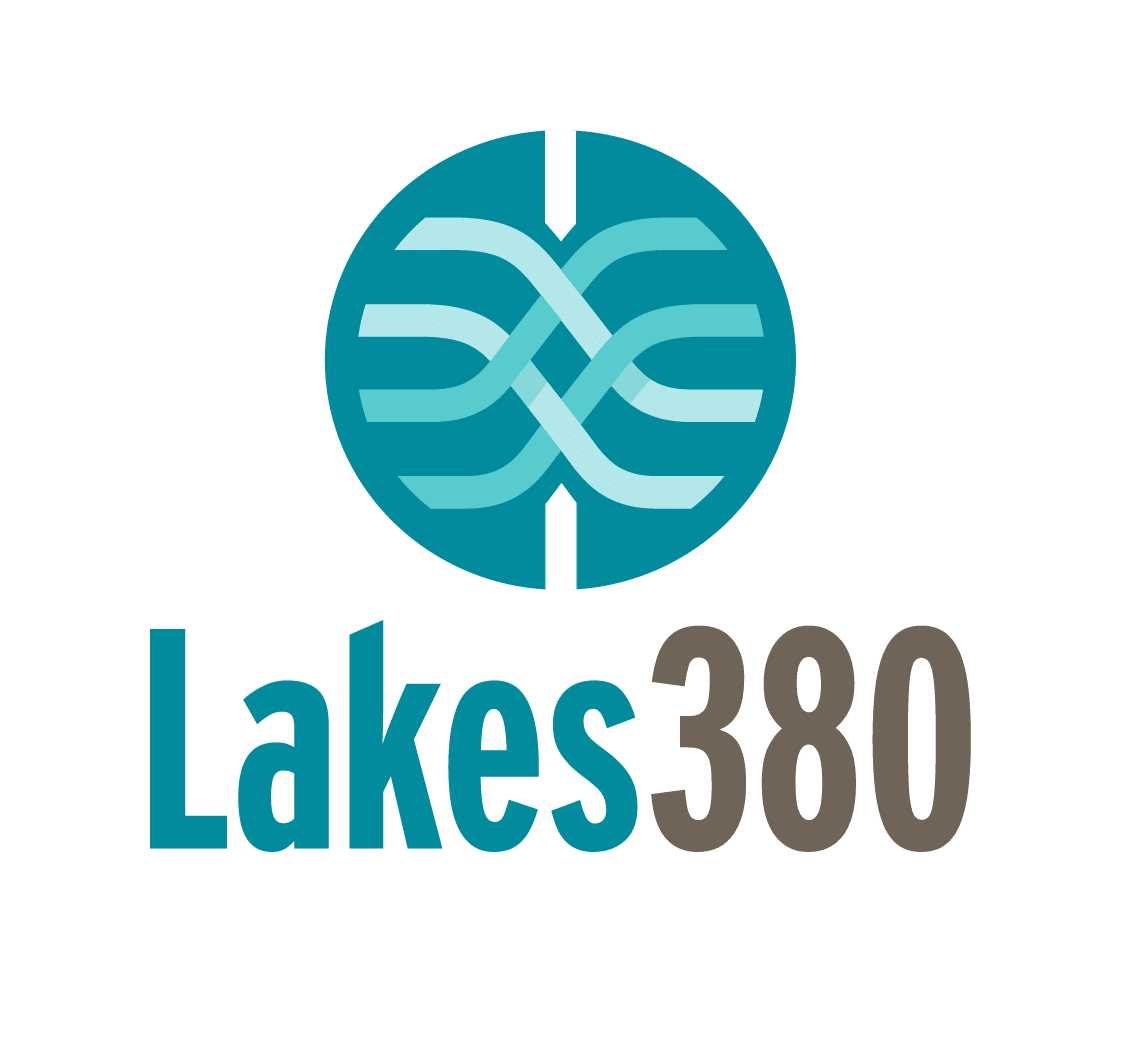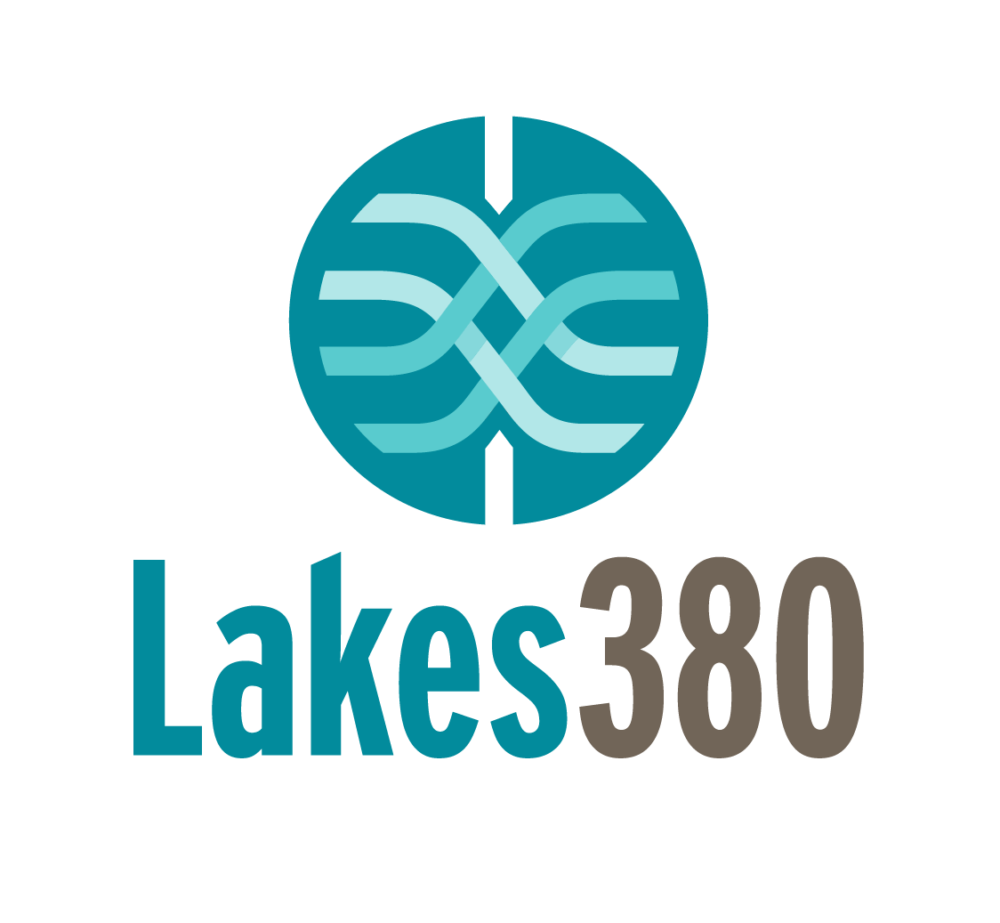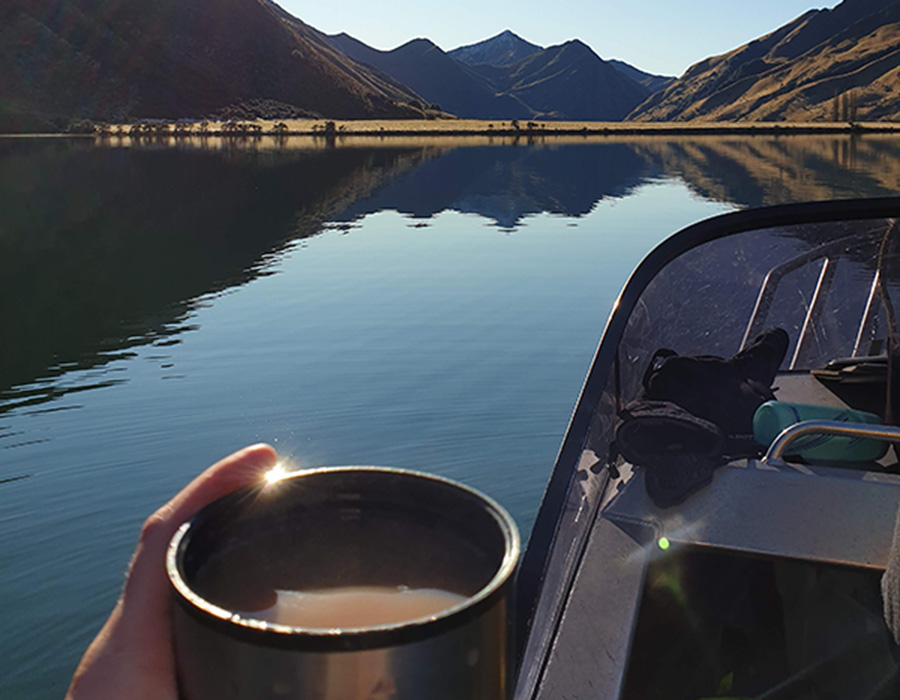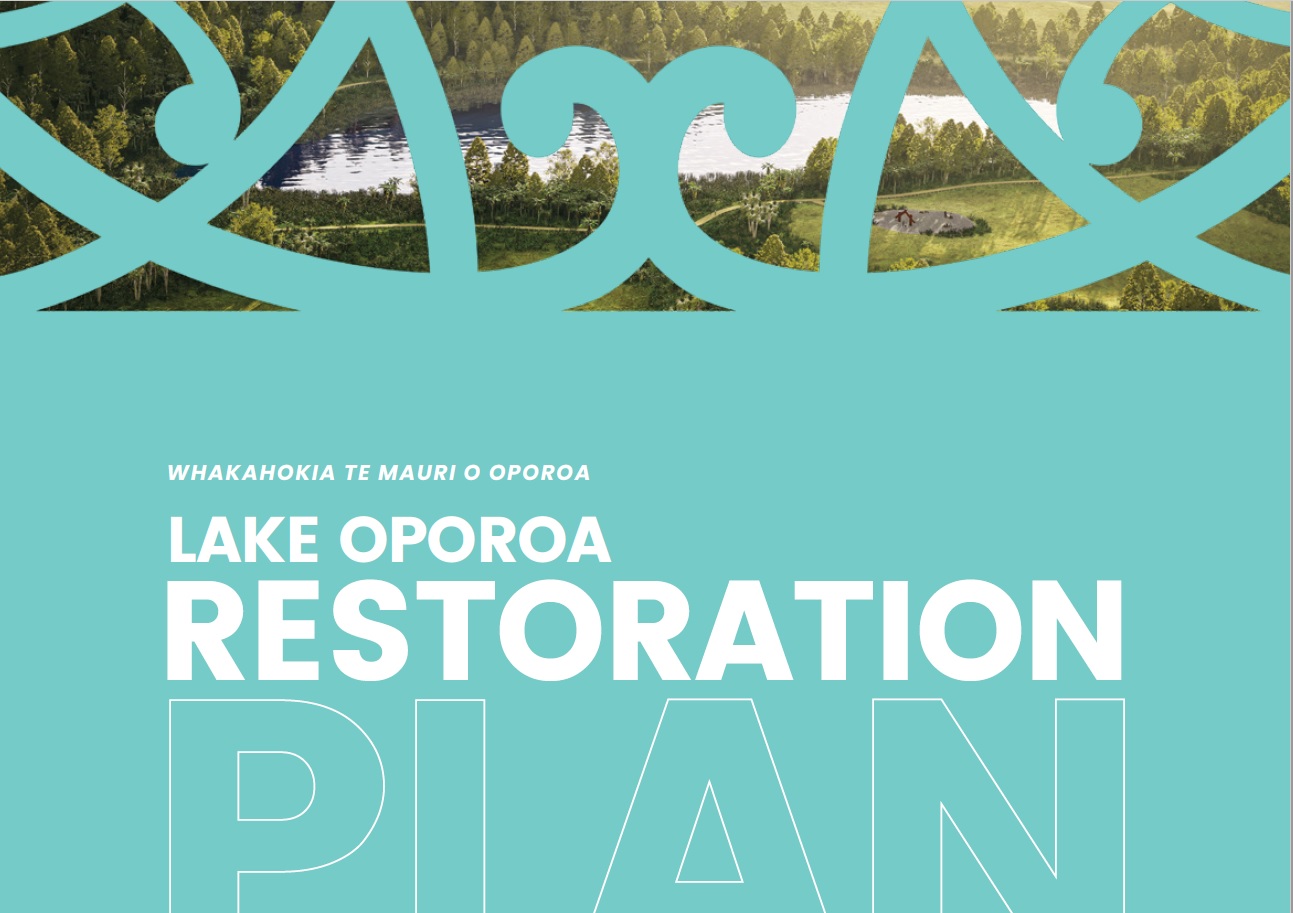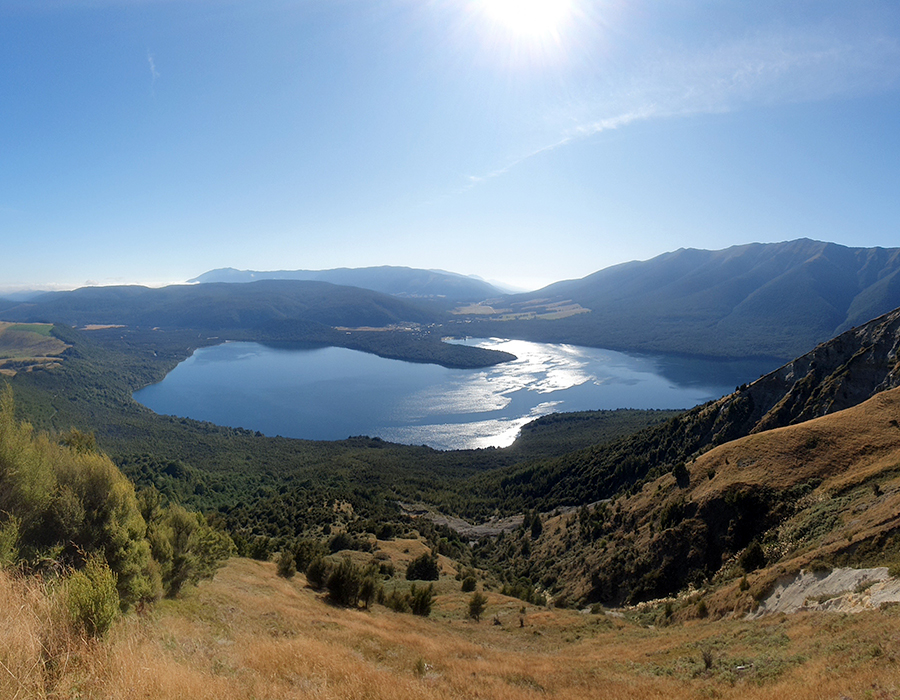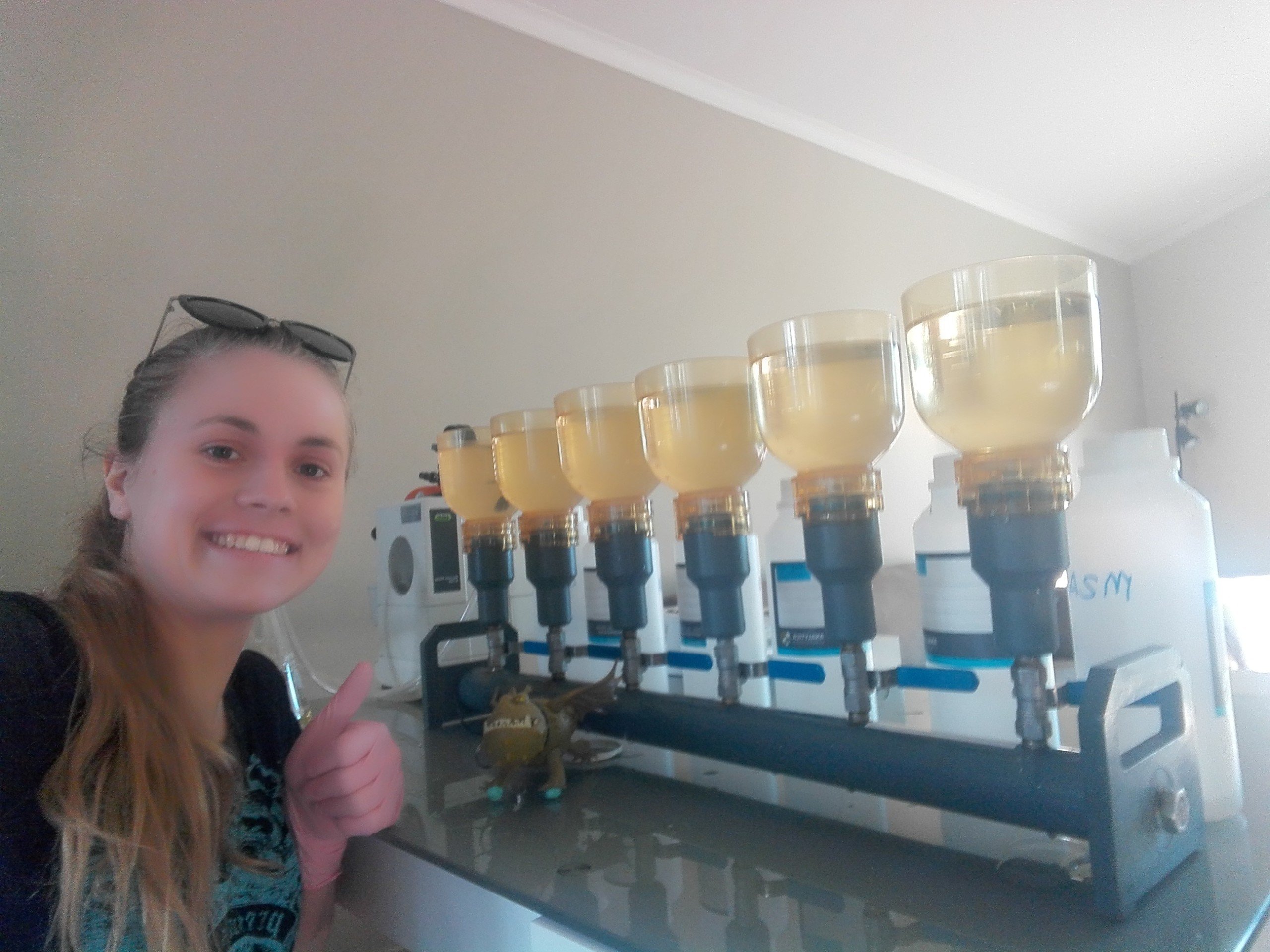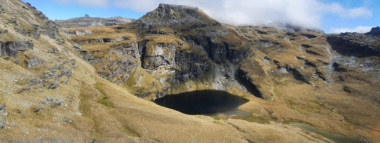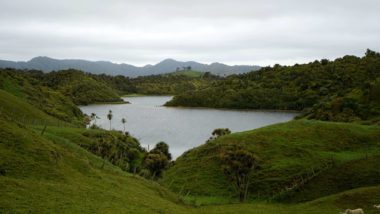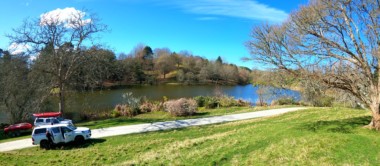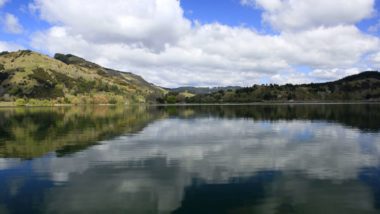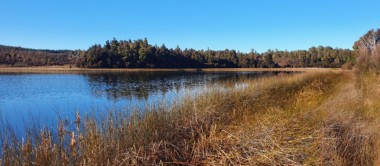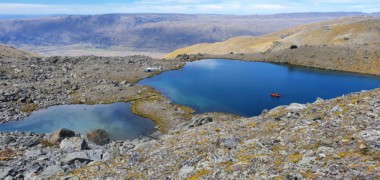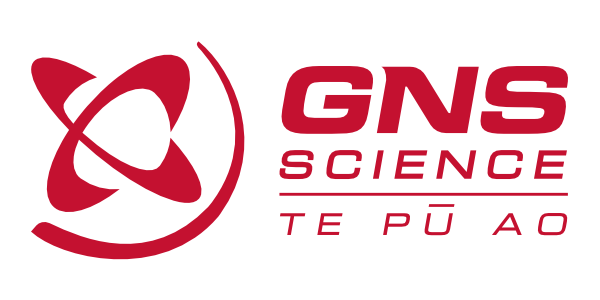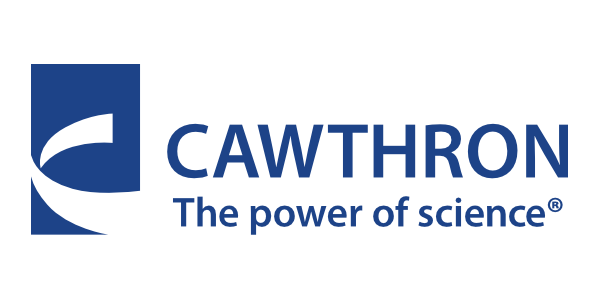After our fieldwork scheduled in March was postponed due to COVID, I was keenly looking forward to getting out in the field after lockdown. Prior to this fieldwork, I had only been out to core three lakes before during summer. This time round, and being my first Lakes380 trip, we visited several alpine lakes in the dead of winter – a stark difference! Despite the cold starts, I was excited about the beautiful scenery and was eager to learn how water quality sampling is carried out. On our first day, we sampled the Tomahawk Lagoons. In the second lagoon, we navigated through a dense, large blanket of macrophytes to find our depocentre, and while coring took place, Susie showed me the ropes in water quality sampling.
Day 2, we made our way down to Waihola, where we were met with -6 degree temperature and a thick mist shadowing the entire lake. It was an eery start to the morning, though the mist soon burnt off and we were able to thaw out. This day, I learnt how to use a smaller coring device, specially designed to sample the top few centimetres of sediment. The following morning we were located at Lake Tuakitoto, a popular duck hunting location near Balclutha. Some of Marcus Vandergoes’ family had come out to visit and see/hear how things in the field operate. After this, we made tracks for Queenstown, passing through a very misty and sunless Alexandra on our way. Upon arrival and seeing the view we had at our accommodation (and every day that followed) I continued to be excited by the beauty of the places I was getting to experience.
Thursday, day 3, was probably my favourite day. In the morning, we cored and sampled one of the deeper lakes of our trip, Moke Lake (shaped like pants!), which was around 44 m deep. Here, we encountered lake snow; algae with a consistency that was dark, gelantenous and goopy – the team was collectively intrigued and something many of us had not seen. Unfortunately, our plankton net was looking worse for wear and required some delicate handling, done well by Hugo. Meanwhile, Marc Schallenberg offered myself, Susie and Lena (aboard the Mitchell) some of his tea, and I must say, there are worse places you could enjoy a cuppa (Photo 1). That afternoon, we took on a frozen Lake Kirkpatrick with paddles at the ready, prepared to carve ourselves a pathway through the inch-thick ice (Photo 2). It was thirsty work, but once in the centre, despite how cold it was, I was in awe. The ice fragments glistened, and clinking against each other in the water they sounded like wind chimes. We worked quickly, racing against the looming shadow.


The next day Lakes Wakatipu and Dispute were on the cards. This was by far felt like the coldest morning, due to the slight breeze on Lake Wakatipu. We discovered chux cloths are handy for more than just cleaning cores – they make great gloves too!
Lake Hayes and Lake Johnson were our 9th and 10th lakes. Lake Johnson was quite the high note to finish on, with the Remarkables to one side and Coronet Peak to the other in full view while we worked (Photo 3). Once more, lake snow was present, and beneath lay highly gaseous sediment. Our poor plankton net had seen better days and, despite the ingenuity of Marc and myself to stretch its lifetime, met its demise in Lake Johnson.

Our final day in Queenstown, the team was greeted in the morning by a smiley Marcus V. with freshly made pancakes – what a treat! Core cutting and pack up followed, before making our way back to Dunedin.
This fieldwork was so special and a lot of fun, and the people made it so much better. How lucky we were with the weather, too! Thank you to Lakes380 for this opportunity, I am very much looking forward to future work!
